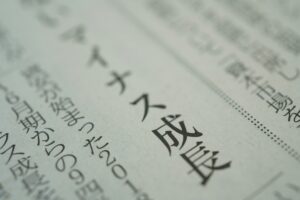Embarking on a journey through Japanese literature offers an unparalleled adventure into the heart, soul, and mind of Japan. This literary voyage is not merely an exploration of texts; it’s a deep dive into a rich cultural heritage, a testament to human emotions and philosophies spanning centuries. Japanese literature, with its unique blend of tradition, aesthetics, and innovation, invites readers from around the globe to explore its vast landscapes, from the ancient tales of warriors and spirits to the sharp, contemporary narratives addressing modern dilemmas. In this article, we navigate through the depths of Japanese literary tradition, exploring its evolution, celebrating its pioneers, and anticipating its future directions.
1. Embarking on a Literary Voyage to Japan
The journey into Japanese literature begins with an open heart and an eager mind. For many, this voyage is a quest for understanding — of other cultures, of diverse philosophies, and of the human condition as seen through the Japanese lens. Japanese literature offers a spectrum of narratives that reflect the country’s rich history, its aesthetic sensibilities, and its constant dialogue between the old and the new. Venturing into this realm, readers find themselves immersed in a world where each text serves as a portal to different eras and insights.
2. Unveiling the Rich Tapestry of Japanese Classics
The classics of Japanese literature lay the foundation of this literary journey. Works such as "The Tale of Genji" by Murasaki Shikibu, often hailed as the world’s first novel, and the haunting narratives of "The Tales of the Heike" provide glimpses into Japan’s aristocratic and warrior cultures, respectively. These texts, along with the poetic compilations of the "Manyoshu" and "Kokinshu," offer insights into the Japanese psyche, blending the natural world with human emotions through exquisite language and metaphor.
3. The Evolution of Japanese Literature Through Ages
Japanese literature has undergone significant transformations, mirroring the country’s own societal shifts. From the Heian period’s elegant courtly literature to the Edo period’s rise of Chōnin culture, which brought about a more populist literary expression in the forms of haiku and ukiyo-e, the evolution of Japanese literature is a testament to its adaptability and resilience. The Meiji Restoration further revolutionized literary themes and techniques, as writers grappled with modernization and Western influences, paving the way for the rich diversity of contemporary Japanese literature.
4. Diving Deep into the World of Japanese Novels
The Japanese novel offers a kaleidoscope of themes and styles. From the psychological depths of Natsume Sōseki’s "Kokoro" to the post-war existential musings of Yukio Mishima and the magical realism of Haruki Murakami, Japanese novels traverse a wide emotional and philosophical range. These works challenge readers to think beyond their boundaries, fostering a global appreciation for the nuances of Japanese thought and storytelling.
5. Poetry in Motion: The Essence of Japanese Verse
Japanese poetry, with its brevity and depth, captures the transient beauty of nature and human emotion. The traditional haiku, with its 5-7-5 syllable structure, and the collaborative linked-verse of renga, highlight the Japanese aesthetic of wabi-sabi — the beauty of imperfection and impermanence. Contemporary poets continue to explore and evolve these forms, weaving together the past and present in their succinct, poignant verses.
6. The Pioneers of Japanese Literature and Their Legacy
The pioneers of Japanese literature, from the Heian period’s Murasaki Shikibu to the Meiji period’s Natsume Sōseki, have left an indelible mark on the literary world. Their works not only laid the groundwork for subsequent generations but also introduced Japanese narratives to a global audience. These authors’ abilities to convey profound truths and human emotions across time and culture underscore the universal appeal of Japanese literature.
7. Contemporary Japanese Literature: A New Wave
In recent years, a new wave of Japanese writers has emerged, exploring themes of identity, isolation, and technology’s impact on society. Authors like Banana Yoshimoto, Ryu Murakami, and Sayaka Murata engage with contemporary issues through their distinctive voices and innovative storytelling techniques. This contemporary literature reflects the ongoing dialogue between tradition and modernity in Japanese culture, offering fresh perspectives and pushing boundaries.
8. The Global Influence of Japanese Literary Giants
Japanese literary giants like Haruki Murakami and Kenzaburo Oe have not only been acclaimed nationally but have also garnered significant international recognition, including the Nobel Prize in Literature. Their works, widely translated and celebrated around the world, have introduced global audiences to the nuances of Japanese culture and thought, influencing writers and readers worldwide and fostering a deeper cross-cultural understanding.
9. Exploring the Role of Translation in Japanese Literature
Translation plays a pivotal role in the global dissemination and appreciation of Japanese literature. The art of translating not only involves the accurate conveyance of meaning but also the subtle nuances of style and cultural context. Translators thus act as bridge-builders, enabling global audiences to experience and appreciate the depth and diversity of Japanese literature in their own languages.
10. Japanese Literature in the Digital Age: A New Chapter
The digital age has ushered in a new chapter for Japanese literature, with e-books, online literary journals, and social media platforms offering both established and emerging writers a broader audience reach. Digital technology has also facilitated greater interaction between writers and readers, transforming the traditional literary landscape and encouraging a dynamic literary culture that transcends geographic and cultural boundaries.
11. The Future of Japanese Literature: Trends and Predictions
As we look to the future, Japanese literature is poised to continue its trajectory of innovation and cross-cultural exchange. Trends such as the blending of genres, the exploration of virtual realities, and the increasing visibility of marginalized voices indicate a vibrant and evolving literary landscape. Furthermore, the global fascination with Japanese culture, from anime to Zen, suggests that the appetite for Japanese narratives will continue to grow, further cementing its place on the world literary stage.
12. Concluding Our Literary Journey Through Japan
Our literary journey through Japan reveals a landscape rich in history, emotion, and thought, where tradition and innovation coexist harmoniously. Japanese literature, with its unique ability to explore the depths of the human condition, continues to captivate and inspire readers and writers across the globe. As we conclude this voyage, it’s clear that the journey is far from over; each page turned is a new horizon, each story a bridge to understanding and connection. The enduring legacy of Japanese literature is not just in the texts themselves but in the dialogues they inspire, the cultures they illuminate, and the universal truths they uncover.
In navigating the depths of Japanese literature, we embark on a journey that transcends time and geography, inviting us into a world where every word and verse holds the weight of centuries. This exploration has offered us a glimpse into the heart of Japan, through its literature that weaves together the threads of history, culture, and emotion. As we close this chapter, we’re reminded that the journey through Japanese literature is an ongoing adventure, one that promises to enrich, challenge, and inspire anyone who dares to embark on it. The legacy of Japanese literature, with its pioneers, its contemporary voices, and its future directions, continues to cast a long shadow on the global literary landscape, inviting generations of readers and writers to delve into its riches.



